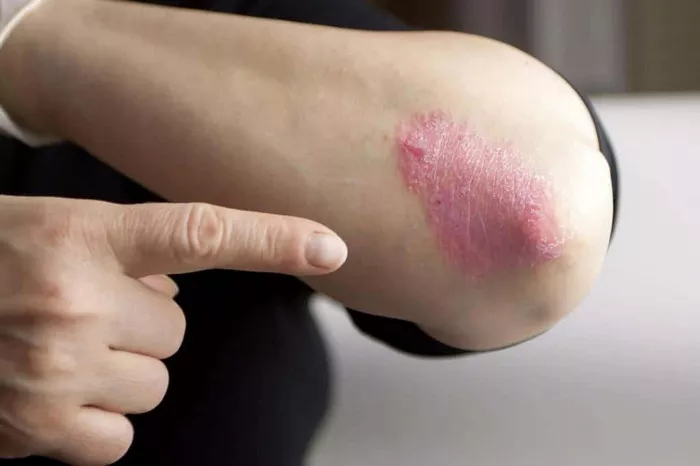Skin rashes are a common concern, often prompting individuals to seek medical attention for their discomfort and potential underlying health issues. One such type of rash that frequently perplexes individuals is wheals rash, also known as hives or urticaria. Wheals rash can vary in severity and duration, presenting as raised, red, and itchy welts on the skin. Understanding the symptoms, causes, and treatment options for wheals rash is crucial for effectively managing this condition and alleviating discomfort.
What are Wheals Rash?
Wheals rash, or hives, is a skin condition characterized by raised, red, and itchy welts that can appear suddenly on the skin. These welts, known as wheals, can vary in size and shape and may be accompanied by a stinging or burning sensation. Wheals rash can occur on any part of the body and often change in size and location within a matter of hours.
The appearance of wheals rash is typically transient, with individual wheals lasting anywhere from a few hours to several days before resolving. In some cases, new wheals may continue to appear as old ones fade, leading to a persistent cycle of discomfort.
Symptoms of Wheals Rash
The primary symptom of wheals rash is the presence of raised, red welts on the skin. These welts may be:
- Raised: Wheals typically protrude above the surface of the surrounding skin, giving them a raised appearance.
- Red: The welts are often red or pink in color, indicating inflammation of the skin.
- Itchy: Wheals rash is commonly accompanied by itching, which can range from mild to severe and may worsen at night or with heat.
- Variable in Size: Wheals can vary in size, ranging from small, individual welts to larger patches of raised skin.
- Transient: The appearance of wheals may change rapidly, with new welts forming as old ones fade. This transient nature distinguishes wheals rash from other types of skin rashes.
In addition to these primary symptoms, individuals with wheals rash may experience accompanying symptoms such as swelling of the affected area, a burning or stinging sensation, and, in severe cases, difficulty breathing or swallowing.
Causes of Wheals Rash
Wheals rash can have various triggers, ranging from allergic reactions to underlying health conditions. Common causes of wheals rash include:
1. Allergies: Allergic reactions to foods, medications, insect stings, or other substances are a leading cause of wheals rash. In susceptible individuals, exposure to an allergen can trigger the release of histamine and other chemicals, leading to the characteristic symptoms of wheals rash.
2. Medications: Certain medications, such as antibiotics, pain relievers, and nonsteroidal anti-inflammatory drugs (NSAIDs), can cause an allergic reaction or non-allergic hypersensitivity reaction that manifests as wheals rash.
3. Infections: Viral or bacterial infections, such as the common cold, strep throat, or hepatitis, can sometimes trigger wheals rash as the body’s immune system responds to the invading pathogens.
4. Physical Stimuli: Physical stimuli such as pressure, friction, heat, cold, or sunlight can induce wheals rash in some individuals. This type of rash, known as physical urticaria, occurs when the skin reacts to external stimuli.
5. Underlying Health Conditions: Certain underlying health conditions, including autoimmune disorders, thyroid disease, and chronic infections, may be associated with recurrent or chronic wheals rash.
SEE ALSO: What Is Chronic Idiopathic Urticaria Hives
Treatment Options for Wheals Rash
The treatment of wheals rash depends on its underlying cause, severity, and duration. In many cases, wheals rash may resolve on its own without specific treatment. However, for individuals experiencing significant discomfort or complications, various treatment options are available:
1. Antihistamines: Antihistamine medications, available over-the-counter or by prescription, are commonly used to relieve itching and reduce the severity of wheals rash by blocking the effects of histamine in the body. Non-drowsy formulations are often preferred for daytime use, while sedating antihistamines may be beneficial for nighttime relief.
2. Corticosteroids: In cases of severe or persistent wheals rash, corticosteroid medications may be prescribed to reduce inflammation and suppress the immune response. These medications are typically used for short-term treatment to minimize side effects.
3. Avoidance of Triggers: Identifying and avoiding triggers that exacerbate wheals rash, such as certain foods, medications, or environmental factors, is essential for preventing recurrent episodes. Allergy testing may be recommended to identify specific allergens.
4. Cool Compresses: Applying cool compresses or taking cool baths can help alleviate itching and soothe inflamed skin during acute episodes of wheals rash.
5. Moisturizers: Using gentle, fragrance-free moisturizers can help hydrate the skin and prevent dryness, which may exacerbate itching and irritation associated with wheals rash.
In addition to these treatment options, individuals with recurrent or chronic wheals rash may benefit from consultation with a dermatologist or allergist for further evaluation and management. In some cases, additional testing, such as blood tests or skin biopsies, may be necessary to identify underlying causes or contributing factors.
Conclusion
Wheals rash, or hives, is a common skin condition characterized by raised, red, and itchy welts that can cause significant discomfort and distress for affected individuals. While wheals rash often resolves on its own without specific treatment, understanding the symptoms, causes, and treatment options is essential for effectively managing this condition and improving quality of life. By identifying triggers, implementing preventive measures, and seeking appropriate medical care when needed, individuals can minimize the impact of wheals rash and maintain healthy, comfortable skin.
Related Topics:



























